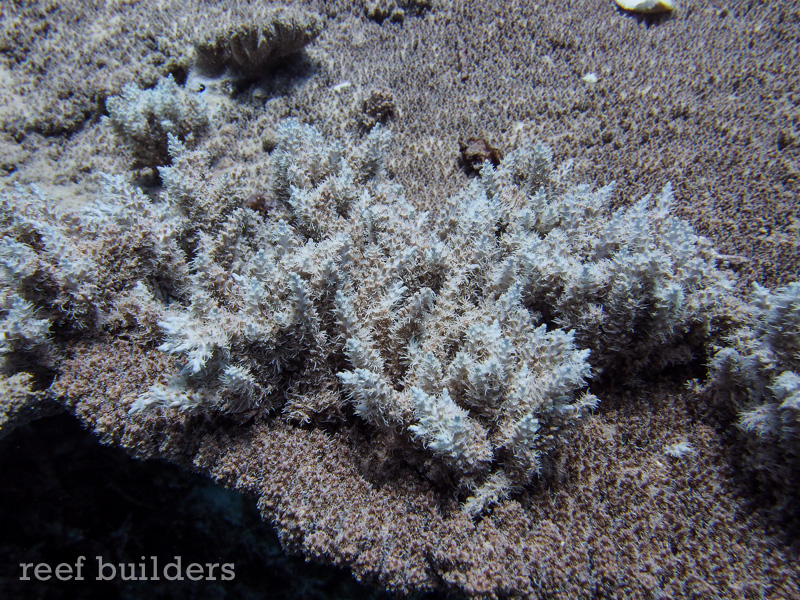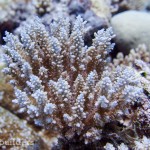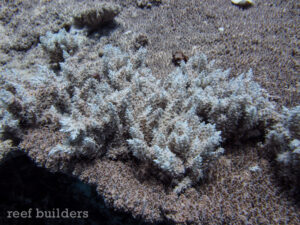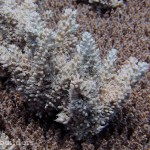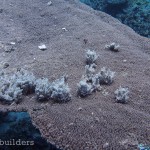We spotted many beautiful corals and unknown colors while thoroughly assessing the coral life of Kwajalein Atoll, but one particularly colony stands out among our discoveries for some very unusual features. Two coral species which are well represented inside the lagoon of Kwajalein Atoll include Acropora cytherea, the common table coral, and Acropora inermis, a neat if rather unremarkable species of staghorn coral.
We saw plenty of both Acropora cytherea and Acropora inermis but one particular colony appeared to have developed into both species. It was a basic table Acro, about four feet in diameter but over one part of the colony it looked like something had dropped a bunch of little staghorn corals over a big part of it. Upon closer examination we saw that the numerous little staghorn colonies were in fact growing out of the table acropora, and new colonies of the staghorn were spontaneously developing right from the table coral!
[singlepic id=10884 w= h= float=none]
We considered explaining this unusual Acropora duality with neoplasms, mutant branch growths, Mr. Sprung even proposed the effects of a virus causing a mutation but the branchy growths from this table acro didn’t look bizarre on their own, except that they were erupting from a living table coral. After further consideration and analysis of the pictures, including those of other species, we can’t overlook the fact that the branched growth looks remarkably like a coral which is also very common at Kwajalein, Acropora inermis.
It’s easy to see how the branched growth looks very similar in both shape, color, growth form and size to the Acropora inermis seen at Kwajalein and pictured here. Meanwhile, it is hard to rectify how this branched-table Acro came to be unless it is a coral chimera, a combination of two corals that can sometimes occur when two coral larvae settle in close proximity and fuse into each other.
The effect of chimerism is noticeable on the upright branch growths of this potential Acropora chimera, with the overall form of the coral being somewhat enlarged compared to the standalone colonies of Acropora inermis, especially in the supersized polyps of the chimera’s branches. It would take molecular testing to confirm the exact nature of this very unusual Acropora colony and it just goes to show that reef building stony corals are still full of surprises.


